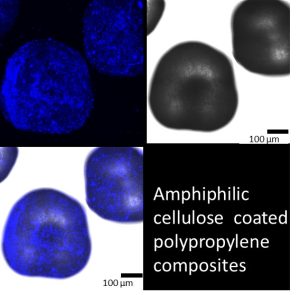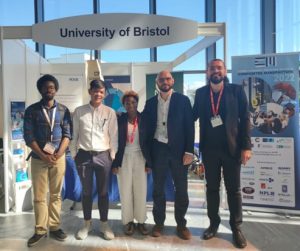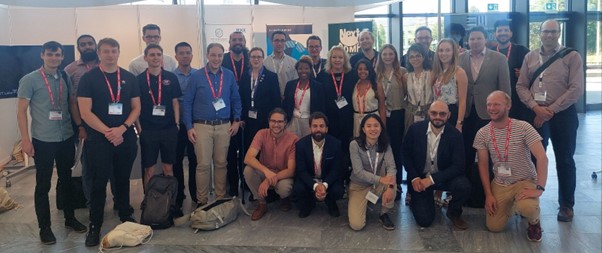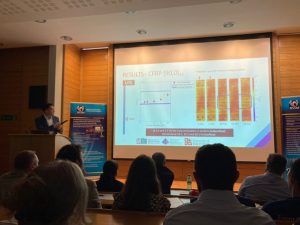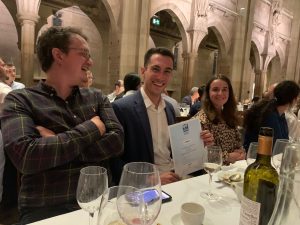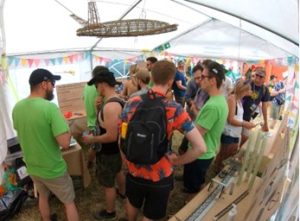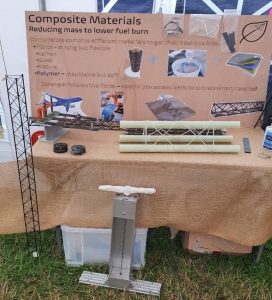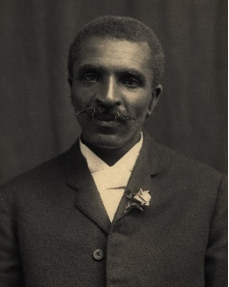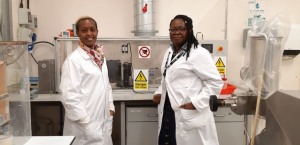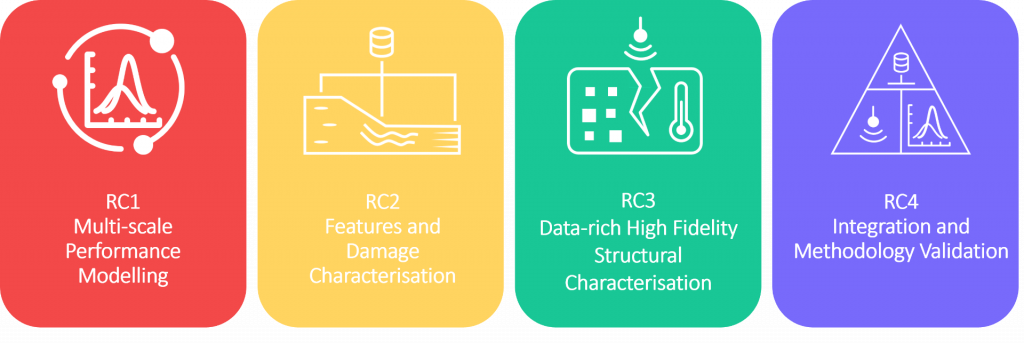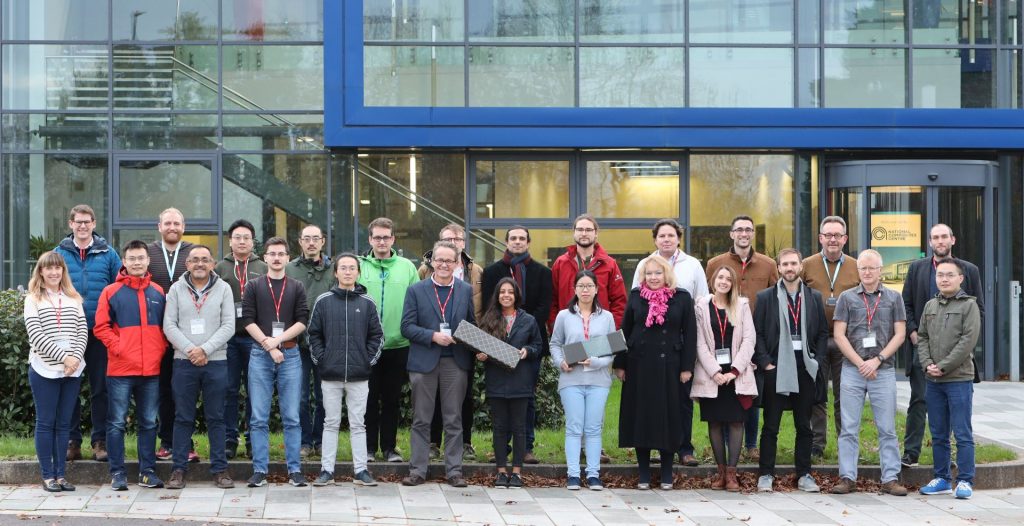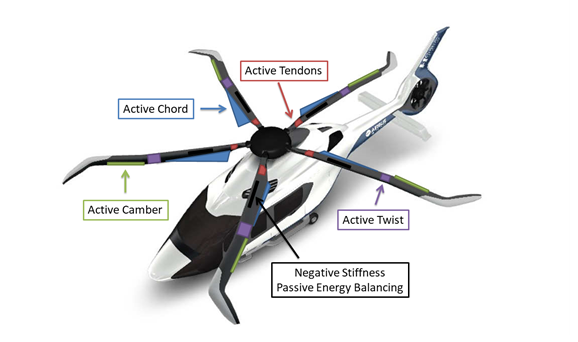This September our NextCOMP and Industrial Doctorate Centre (IDC) teams attended the FUTURES event, held on the SS Great Britain. Read on for an insight into what both teams got up to…
NextCOMP – Composite “Crushing it” at “Up late on the SS Great Britain”, FUTURES European Researchers Night.
The NextCOMP team and BCI collaborators enjoyed an extremely fun and busy evening on Friday 30 September at “Up late on the SS Great Britain”, one of the events held as part of FUTURES organised by the University of Bristol Public Engagement team. Despite the weather, this was a very well-supported event at the Bristol harbourside and our stand “Crushing it: Be a Composites Engineer” was very popular with visitors of all ages, including Brunel and Prof Evelyn Welch, Vice Chancellor. Visitors were eager to watch our Dobot demonstrations as well as to have the chance to manufacture, test and inspect their own jelly and pasta composites using the brand new “NextCOMP Crusher”. We loved chatting to all the visitors about our research and hearing their thoughts about what we are doing!

Photos top left – bottom right:
Brunel tests his jelly composite ably assisted by Bohao and Eleni.
One of our younger visitors enjoys using the NextCOMP Crusher.
The NextCOMP Crusher in action.
Close up inspection of the composite.
Some of the team before the doors opened to the public.
—————————————————————————————————————————
Industrial Doctorate Centre at School Research Fair, FUTURES 2022.
On Friday Patrick, Huw, Humza, Will, Ben and Raul, EngD Students from the IDC, spent the day with Helen and Janice at the Schools Research Fair, part of FUTURES 2022. Their challenge was to engage pupils aged 7 – 12 from local schools about the magical properties of composites materials. With the aid of Play-Doh and spaghetti, pupils learnt that by combining materials you can increase the strength to weight ratio, so enabling us to fly more sustainably. Pupils also considered the challenges of recycling composites. Have you ever tried to remove spaghetti from Play-Doh? The pupils investigations with Play-Doh demonstrated that aligning your fibres neatly created the best results. When asked what the pupils would like to make stronger and lighter, school bags, trainers and cars were top of the children’s wish list.
Teachers and pupils alike were amazed by the properties of composites materials and impressed by the team’s ability to explain a complex theory in such a simple manner so sparking the interest of many a budding engineer.
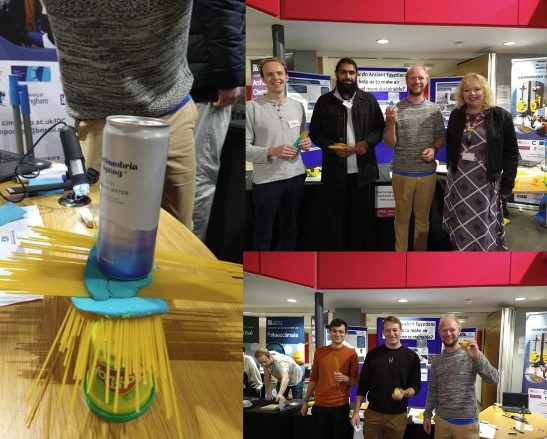
Photos left-right:
Demonstration of Play-Doh and spaghetti structure.
Group photos of IDC BCI teams.
FUTURES is a unique public engagement collaboration between the University of Bath, Bath Spa University, University of Bristol, University of Exeter and University of Plymouth. Which aims to engage a wide range of people from the South West of England with research and innovation and showcase the region’s rich cultural heritage.

 by Valeska Ting
by Valeska Ting 

 by
by 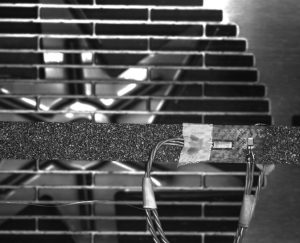

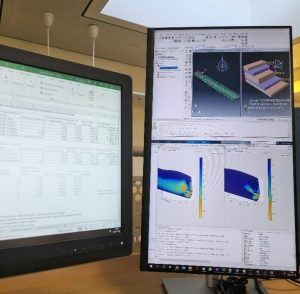 Finite element analysis (FEA) was used to determine the design alterations required for comparable performance, followed by a cradle-to-grave life cycle assessment to ascertain the subsequent environmental impact of these alterations. The preliminary results show a significantly greater volume of material is required in a flax-fibre blade to match reserve factor and deflection requirements; however, these models do show reduced environmental impact compared with the glass-fibre composite blades. End-of-life options assessed include landfill and incineration, with and wit
Finite element analysis (FEA) was used to determine the design alterations required for comparable performance, followed by a cradle-to-grave life cycle assessment to ascertain the subsequent environmental impact of these alterations. The preliminary results show a significantly greater volume of material is required in a flax-fibre blade to match reserve factor and deflection requirements; however, these models do show reduced environmental impact compared with the glass-fibre composite blades. End-of-life options assessed include landfill and incineration, with and wit
 by Amaka Onyianta a.j.onyianta@bristol.ac.uk; Steve Eichhorn s.j.eichhorn@bristol.ac.uk
by Amaka Onyianta a.j.onyianta@bristol.ac.uk; Steve Eichhorn s.j.eichhorn@bristol.ac.uk